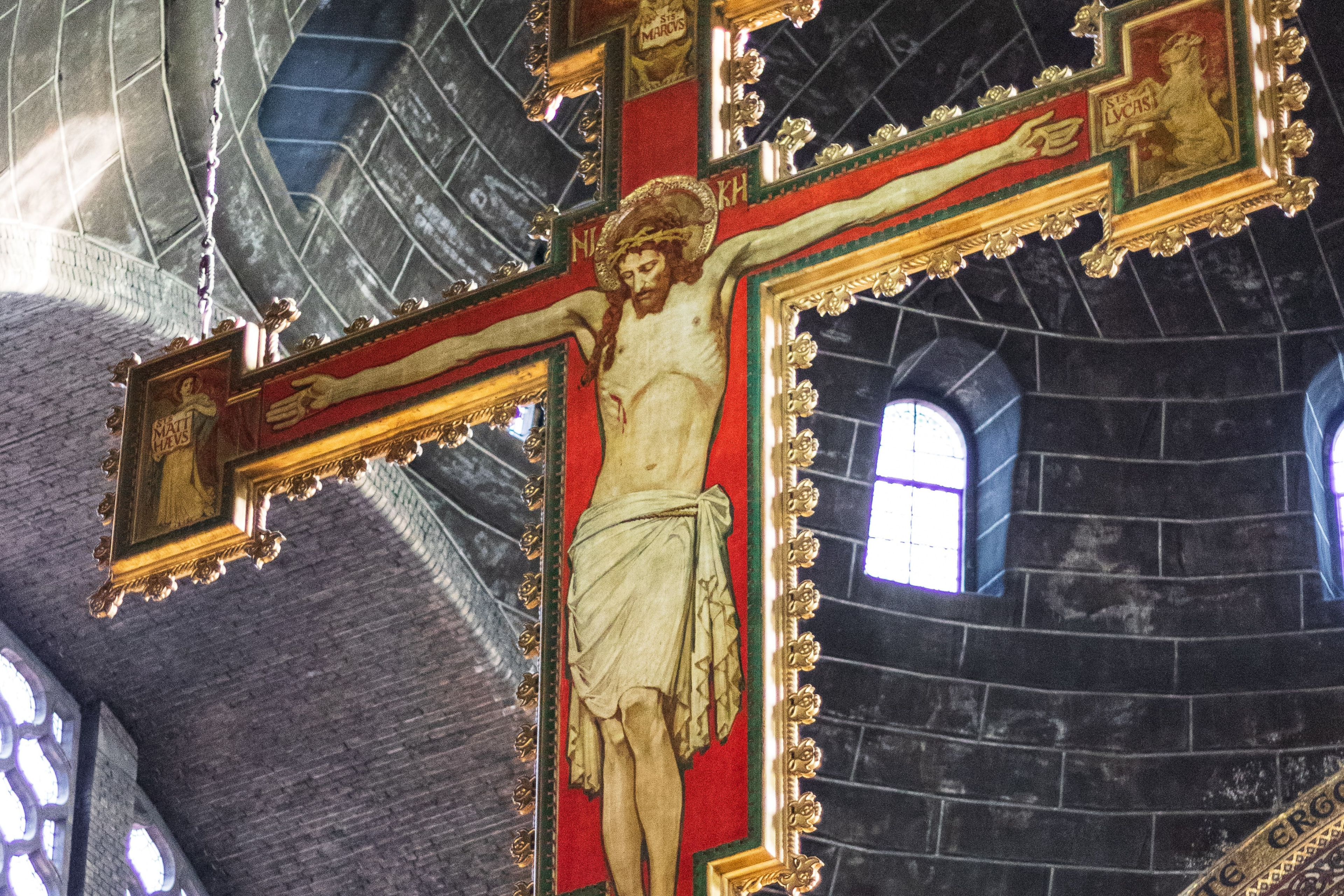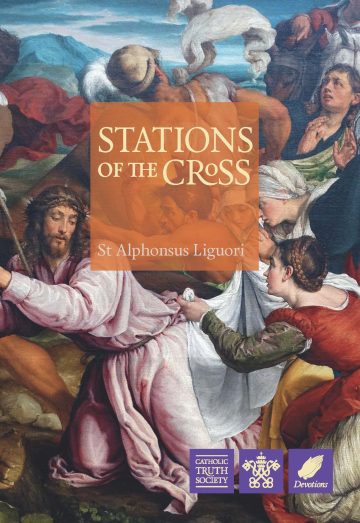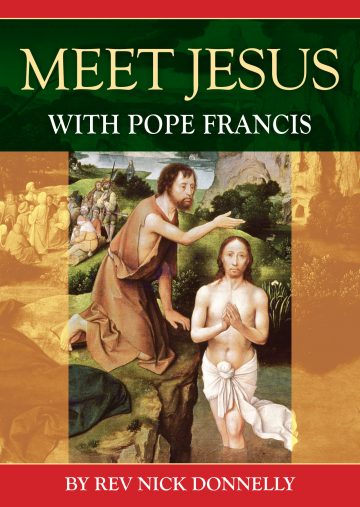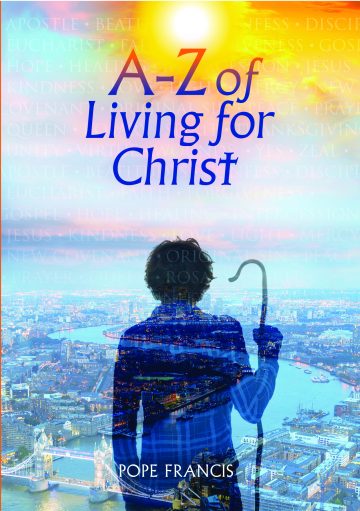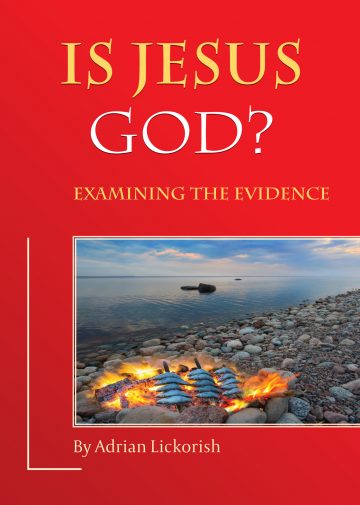He came to bring life to the world
If you go to Galilee in the north of Israel, you can visit the excavations they have done at the village of Capernaum, on the shore of the great lake there. This was where Jesus based himself for the three years of his public ministry.
You can see the ruins of the house of St Peter, where Jesus probably stayed. You can see the walls of the local synagogue, still standing, where he went to worship and teach. I wish there were a time machine, that could take us back to that very place, so we could witness things for ourselves.
The nearest we get to a time machine is the four Gospels in the Bible. These are historical accounts of the life of Jesus, written by Matthew, Mark, Luke and John. They are based on eye-witness testimonies.
The Gospels tell the same story, but emphasise different things. They connect us with what took place in Capernaum and further afield. You see Jesus touching the lives of people in extraordinary ways.
In the village of Bethsaida, he touched the eyes of a man who was completely blind, and healed him. In the town of Nain, when he saw a woman grieving for her dead son, he touched the body, and the man was brought back to life. When there were thousands of hungry people with him on the mountain, desperate for food, he fed them all with just five loaves and two fish.
When a storm lashed against the boat he was in, he shouted into the wind and the waves and brought everything to a sudden calm. In the village of Cana, when there was no drink left at a wedding, he turned water into wine.
These miracles are not just fairy tales or myths. There were hundreds of witnesses. The people of Galilee were not fools. They knew how to spot a fake wonderworker.
I love the story of the paralysed man in Mark’s Gospel. Some people carry a friend on a stretcher to meet Jesus. They are desperate for him to be healed. But the crowd is so thick they can’t get near him. So they climb up on top of the house where Jesus is speaking, dig through the roof (it was made of mud and branches), and lower the man down through the hole so he drops at the feet of Jesus.
Why go to such extremes? Because they recognised a power and an authority in him. When he taught, they felt that the wisdom of God was speaking through him. When he forgave sins, they felt that the mercy of God was reaching out to touch them. When he prayed, it seemed that there was no distance between earth and heaven. He was fixing a world that had somehow become broken.
And wherever he went, he brought people together and invited them into his friendship. There was this incredible makeshift community that gathered around him: young and old, rich and poor, male and female, Jew and Gentile, priests and prostitutes, saints and sinners. No one was excluded, apart from those who excluded themselves. He called this unusual community the Church.
Jesus said: “I am the Way, the Truth, and the Life.” It was as if he were opening a door into a completely new way of life. He called it the Kingdom of God. It was something the Jewish people had been promised for many centuries, and something that all people were secretly longing for.
There was a joy that seemed to come from beyond this world. It made people believe that life was worth living, and that even death might not have the final word.
The saving death of Jesus
Westminster Cathedral is one of the largest churches in central London. As you enter the building you notice the darkness of the unfinished ceiling, and the altar in the distance. But dominating everything, hanging high above the altar, is a huge painted crucifix.
Here is the figure of Jesus, with his arms outstretched, nailed to a cross, his head bent to one side at the moment of his death. It’s a powerful symbol of how the death of Jesus is at the very heart of Christianity.
Christians believe that something has gone wrong with the world, and only God can put it right. Things are not the way they are meant to be. Suffering, loneliness, conflict, death. There is so much good in the world, but there is so much brokenness and confusion as well.
Christians believe that Jesus gave his life for us by dying on the Cross, and then rose from the dead on the third day, in the glory of the Resurrection. His death brings us peace with God, and the hope of eternal life. It brings healing. And it brings forgiveness for what the Bible calls sin, which is all the wrong we have done and all the harm we have caused. But why did he have to die?
The Son of God became human because he wanted to be with us. He wanted to enter into the deepest reality of human experience; to share not just our joy but also our loneliness, our suffering, our darkness; so that no one, anywhere, could ever say they had been abandoned by God.
He let himself be tortured and executed like a common criminal. It was a desire to come close to all those who suffer, and lead them out to a better place.
A few years ago there was a terrible crisis in Thailand when twelve boys and their football coach became trapped in an underground cave. The tunnels had been flooded by heavy rains and the exits were blocked. It was too dangerous and too time-consuming to dig down from the surface.
The only answer was for a team of divers to go into the tunnels themselves, at great risk to their own lives. They had to find the boys, sit with them in the cave, and then lead them out, one by one.
They brought light into the darkness of the cave – and food, and blankets, and oxygen, and a video link! But they could only do this by sharing the same risks and fears as the boys. In the same way, Jesus comes to be with us. He brings light into our darkness. This is one part of the Cross.
But even more, Jesus came to give his life for us. The greatest love someone can have is to give up their life for another. We have an amazing example of this here in England.
Alban was a soldier in a Roman city near London. He had no faith, but gave shelter to a Christian priest who was being hunted down by the Roman authorities. Alban was so moved by the prayers and example of the priest that he converted to Christianity.
When the authorities caught up with them, Alban helped the priest to escape. Then he disguised himself in the cloak the priest had left, and let himself be arrested in his place, giving the priest time to get away. And when they discovered that it was in fact Alban, they interrogated him and told him to renounce his Christian faith, but he refused.
So they executed him on the top of the hill outside the city. Alban sacrificed his life out of love: love for his neighbour, and love for God.
Imagine if you discovered that you were only alive because someone had given their life for you. Well this is the reality. Jesus offered his life on the Cross for each one of us, personally. He did this out of love – love for each one of us, for you, for me. He carried on his shoulders the weight of every human sin and the burden of every human suffering.
The Cross of Jesus is the ultimate sacrifice. It undoes all the damage that has ever been done and sets us free. It was of infinite value because the one saying Yes was the Son of God. All we need to do is to unite our yes with his, and try to love him in return.
The meaning of the Resurrection
The death of Jesus completely shattered his followers. They lost all hope and started to drift back to the villages they had come from.
The community of the Church, this new family that Jesus had gathered around him, simply fell apart. They had no shepherd and no purpose anymore.
But just a few days later, something fundamental had changed. They were together in prayer, full of peace, and aware that they had a mission to the whole world. And they were speaking about Jesus as if he were alive. What had happened?
Christians believe that Jesus died and was raised to life on the third day by God the Father, through the power of the Holy Spirit. He appeared to his friends and disciples – teaching them and sharing his life with them.
After forty days, he was taken up into heaven, body and soul, to be with the Father. Then, on the Feast of Pentecost, he sent the Holy Spirit upon the Church, so that all people could share in this new life.
Imagine a group of climbers on a dangerous rock-face. The lead climber gets to the top of the cliff, hauls himself up to safety, and hammers in a stake to make sure he is secure. But he hasn’t abandoned his friends who are behind him. He leans back over the cliff and throws down the rope to them.
When they take hold of the rope, they know they are safe, even though they are still on the rock-face. It’s the same for us when we say Yes to the Holy Spirit and Yes to the Church – we enter a place of safety, we become one with Christ, even though he has gone before us.
When he rose from the dead, Jesus did not just come back to his old life; he entered into a completely new way of being. His human body is now glorified, sharing in God’s eternal life. This is a new creation, freed from suffering and death. The Resurrection is a symbol of hope, a sign of God’s victory over sin and evil.
There is one image of the Resurrection you often find in many Eastern Churches. Jesus is standing in the centre, surrounded by light. Beneath him lies the darkness of death. He has smashed open the gates of the underworld, and he stands on the shattered pieces that remain. Death has been destroyed. It has no power anymore.
At the same time, he is reaching down to the figures of Adam and Eve, taking them by the hand, and lifting them out of their tombs, like a lifeguard lifting someone out of the water. It’s the same for us: as Christ rises from the tomb he lifts us out of the spiritual darkness that we are in, bringing us to a place of safety. We just need to reach out and take his hand.
The death and Resurrection of Jesus are not just stories. It’s amazing to discover that Jesus Christ is alive. That he died out of love for me and for you, personally. That he rose from the dead out of love for me and for you, personally. And that he invites us to share his life in a very personal way.
We can respond to this amazing knowledge by taking a step of faith. It simply means to put your trust in Jesus Christ. To say to him, aloud or in your heart, “Jesus, I believe in you”; or even “Jesus, help me to believe in you.”
It might not feel right for you. But if something has touched you in this blog, I invite you not to ignore it, but to keep exploring, and to take a small step in faith – either now in your heart, or later at home. It could be the beginning of something very important.
Questions for reflection
Do you know anyone whose religious faith or example have touched you?
What do you associate with the season of Christmas and the season of Easter? What customs or traditions come with them?
Do you know anything about the Christian beliefs that lie behind Christmas and Easter?
Can you think of anyone who has given up their life for another person or a cause?
Can you imagine a situation where you might give up your life for someone else?
How would you respond if you knew someone had given up their life for you?
Do you believe in life after death? What do you think happens to us after death?
Why do you think that so many people find it hard to believe in life after death?
What do you think about the idea that Jesus gave up his life and rose from the dead for you? What difference might it make to your life?
 This blog is extracted from SYCAMORE: The Catholic Faith Explained.In SYCAMORE you will find answers to the most common questions about life and faith, whether you want to deepen the faith you already have or are exploring the faith for the first time.
This blog is extracted from SYCAMORE: The Catholic Faith Explained.In SYCAMORE you will find answers to the most common questions about life and faith, whether you want to deepen the faith you already have or are exploring the faith for the first time.
To learn more about the Catholic faith in an approachable way, or for help passing it on to others, get your copy of SYCAMORE today.
